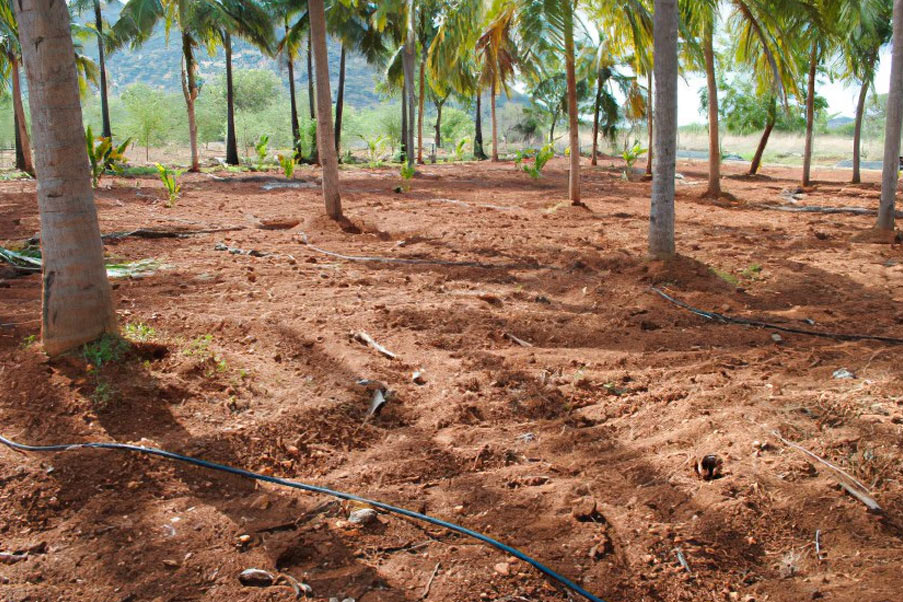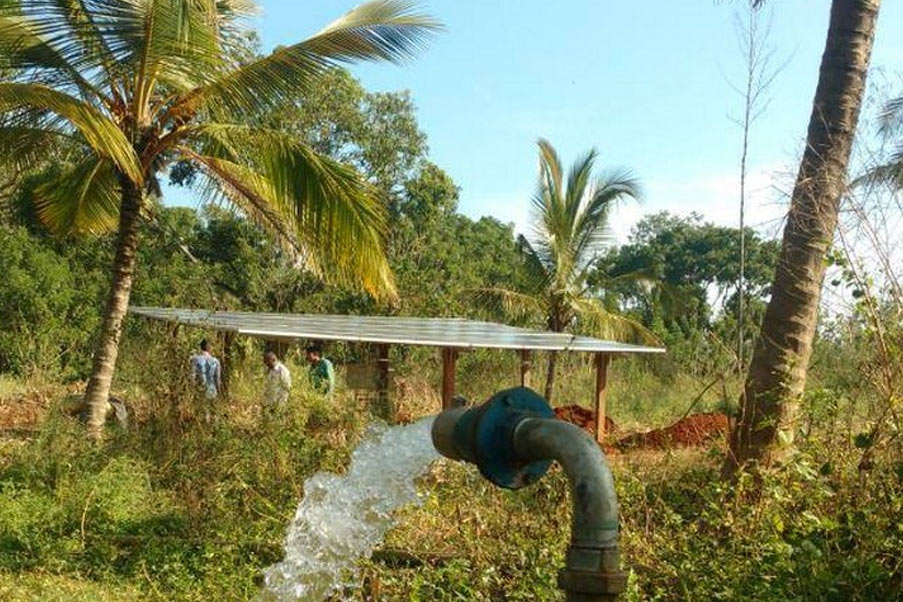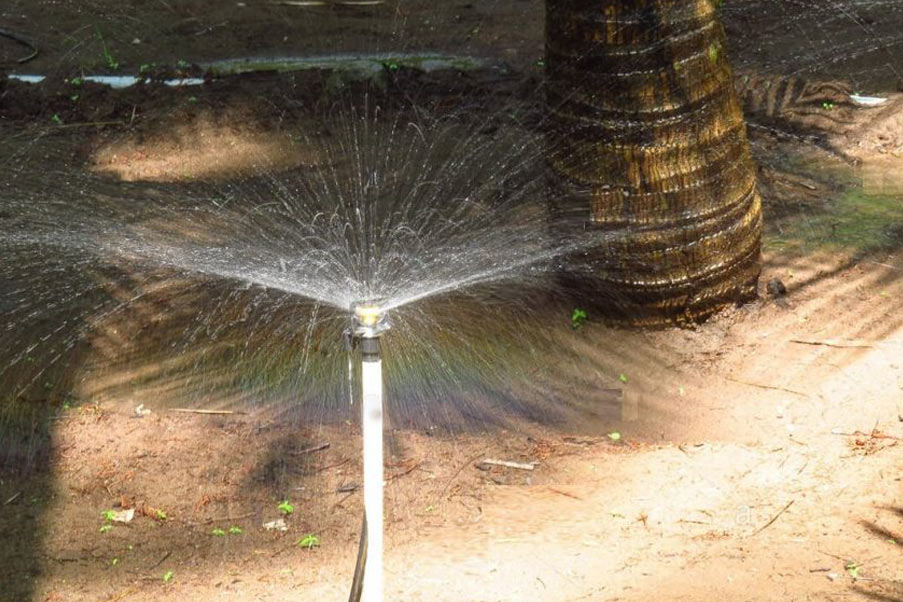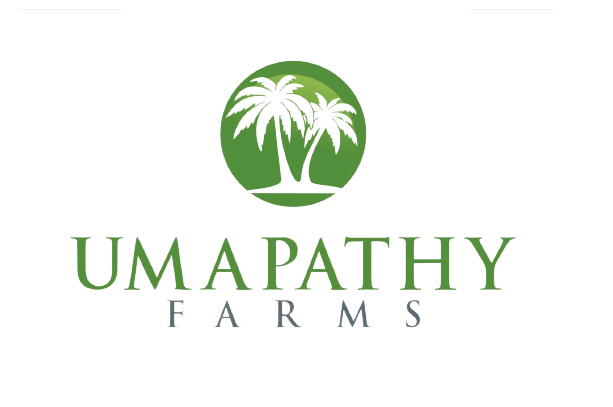
Drip irrigation
It also requires a permanent piping system. The advantages of this system are reduced water doses, good control of water volume applied, and continuous water supply to the palm without excessive percolation. Drip irrigation is also low labour and energy intensive. By using this system, the soil surface layer remains dry, there will be much less weed development and weeding costs will be reduced. Sub-surface placement (in the root zone) of emitters covered a greater volume of the basin and maintained higher moisture content than the surface-placed emitter. However, it may lead to loss of water due to deep drainage beyond the root zone.

Flood irrigation
It should be done only under conditions of ample water availability. It can also be done only on flat land. The advantages are the low technical skills required and low investment costs. Disadvantages are the difficulty in controlling of the volume of water applied, increased leaching of nutrients and discontinuity of water application. Irrigation in basins around the stem has about the same advantages and disadvantages as irrigation by flooding, but on a lower scale. Mulching of the basins with organic material reduces loss of water by evaporation. Water can be brought to the basin through a canal system, or through permanently buried pipes from which water is manually distributed from the take-off points by use of a hose.

Sprinkler Irrigation
It has some advantages on sloping land, as the risk of water runoff is small. It requires a complicated piping system and investment costs are high. Risk of damage to pipes and sprinklers is considerable. Water loss through evaporation is higher. In a system with permanently fixed sprinklers, supplied by underground pipes, the wet circle will be always the same, which may result in more intensive rooting and more efficient use of water. Water doses can be controlled by the length of sprinkling times. Equal distribution of water over the circle will be more difficult with increasing radius of the circle.

